目次
- 1 BOE Holds Rates as European Banks Cut: Trump Tariff Impact
- 1.1 Bank of England’s “Dovish” Hold Decision
- 1.2 Other European Central Banks: A Wave of Rate Cuts
- 1.3 Trump Administration Trade Policy and Uncertainty: Severe Global Economic Impact
- 1.4 Central Bank Navigation Challenges: Increasingly Complex Policy Operations
- 1.5 Japan’s Monetary Policy and Central Bank System: Committee System Transparency and Challenges
- 1.6 Central Bank Information Disclosure Impact on Market Expectations and Policy Committees
- 1.7 Geopolitical Risks and Financial Market Impact
- 1.8 Investment Environment and Changes in Japan’s Balance of Payments Structure
- 1.9 Conclusion: Increasingly Complex Monetary Policy Navigation
BOE Holds Rates as European Banks Cut: Trump Tariff Impact
On June 19, 2025, major European central banks announced their monetary policy decisions, revealing a stark divergence in approach. While the Bank of England (BOE) held its policy rate steady, Switzerland, Norway, and Sweden all opted for rate cuts. Behind these contrasting moves lies a common challenge: the uncertainty brought by the Trump administration’s trade policies. As global economic uncertainty continues to grow year by year, central banks are forced to navigate increasingly complex monetary policy operations while balancing domestic economic stability with international pressures.
Bank of England’s “Dovish” Hold Decision
Unexpected Vote Split Signals Dovish Tilt
On June 19, 2025, the Bank of England’s Monetary Policy Committee (MPC) decided to hold the policy rate at 4.25%, marking the second consecutive meeting without a change. However, the notable aspect was the MPC’s voting breakdown.
The vote split 6-3, with six members supporting the hold and three (Deputy Governor Ramsden, and external members Dhingra and Taylor) favoring a 0.25 percentage point cut. This was more dovish than the 7-2 split markets had anticipated, leading to the decision being perceived as “dovish” by market participants. The fact that one of the three deputy governors voted for a cut also came as a minor surprise.
According to the minutes, several of the seven members who supported holding rates described it as a “finely balanced decision” between holding and cutting, with trade-related news (Trump tariffs) tipping the scales toward a cut for some members.
Hawks and Doves: Understanding Monetary Policy Stances
Understanding the concepts of “hawks” and “doves” is crucial for grasping monetary policy discussions.
Dovish refers to a stance that prioritizes economic stimulus and reducing unemployment, supporting keeping interest rates low. During economic stagnation, low interest rate policies make it easier for businesses and individuals to access funding, aiming to promote economic growth. Doves emphasize short-term economic recovery and tend to adopt policies with immediate effects.
Hawkish refers to a stance that prioritizes inflation control and supports raising interest rates. Hawks adopt strict monetary policies to prevent economic overheating and maintain price stability. Higher interest rates increase borrowing costs and can suppress excessive investment and consumption. Hawkish comments typically have a negative impact on stock prices, as investors tend to shift funds to lower-risk assets.
Central bank monetary policy directions and official statements significantly impact markets, with market participants analyzing whether statements are hawkish or dovish to inform their future outlook and investment decisions.
UK Economic Conditions: Complex Indicators Reveal Challenges
The BOE’s decision reflects the complex situation facing the UK economy. The BOE cited the following factors behind its hold decision:
Inflation Indicators:
- May 2025 UK Consumer Price Index (CPI) rose +3.4% year-on-year, slightly above market expectations of +3.3% but down from +3.5% the previous month
- Core CPI at +3.5% (down from +3.8% previously)
- Services CPI at +4.7% (down from +5.4% previously)
- Both headline and core CPI remain in the mid-3% range year-on-year, still above the 2% target
- Household and business inflation expectations remain elevated due to surging energy and food prices
Economic Growth Indicators:
- April 2025 monthly GDP contracted -0.3% month-on-month, worse than the expected -0.1%
- Q1 2025 GDP grew +0.7% quarter-on-quarter, exceeding market expectations of +0.6%
- Domestic economic growth remains on a weak trajectory with clear signs of continued labor market loosening
Labor Market Indicators:
- May 2025 unemployment rate rose to 4.5% from 4.4% previously
- Average weekly earnings excluding bonuses grew +5.3% year-on-year, below market expectations of +5.5% and the previous +5.6%, continuing the wage growth deceleration trend
- Wage growth indicators continued to ease in May, with significant deceleration expected through the remainder of the year
Purchasing Managers’ Index (PMI):
- May 2025 Manufacturing PMI final reading: 45.1
- Services PMI final reading: 50.2
- Both indicators were revised down from preliminary readings
The BOE judged that while inflation is converging, there is insufficient evidence to justify further monetary easing. The committee is monitoring how the easing of wage pressures will feed through to consumer inflation.
Future Monetary Policy Outlook
The BOE maintained its guidance that “a gradual and cautious approach remains necessary for further unwinding of monetary tightening.” Markets have fully priced in two more 0.25 percentage point cuts this year, with the probability of a cut at the next MPC meeting on August 7 seen at nearly 80%.
The BOE has already cut rates twice in 2025, from 4.75% to 4.5% in February and from 4.5% to 4.25% in May, implementing quarterly 0.25 percentage point reductions. However, the slow pace of services inflation deceleration and Trump tariff uncertainty suggest the timing of cuts could be pushed back.
Governor Bailey commented that the policy rate would likely continue to decline gradually but emphasized this wasn’t a prediction for the next meeting, reiterating that rate levels would be determined meeting by meeting based on incoming data.
Other European Central Banks: A Wave of Rate Cuts
While the UK held rates steady, three European central banks—Switzerland, Norway, and Sweden—all decided to cut rates within a 24-hour period. This represents a contrasting move compared to major central banks like the Federal Reserve and Bank of Japan, which maintain a holding stance.
Swiss National Bank (SNB): Return to Zero Rates
On June 19, the Swiss National Bank announced a 0.25 percentage point rate cut to 0%. This marks the sixth consecutive cut since the first reduction in nine years in March 2024, and the sixth easing operation since the pandemic.
The main reasons for the cut include persistently weakening inflation pressures:
- May 2025 CPI fell -0.1% year-on-year, turning negative (deflation) for the first time since March 2021
- Full-year inflation forecast dramatically revised down to 0.2%
- The Swiss franc (CHF), as a traditional safe-haven currency, had persistently appreciated against the dollar and euro amid rising expectations of Trump’s victory, contributing to lower import prices, with currency appreciation control being a primary objective
The SNB indicated it would continue to carefully monitor the situation and adjust monetary policy as needed. Some observers suggest the SNB is approaching a return to negative interest rates.
Norges Bank (Norway): Surprise Cut
Within 24 hours of the Swiss decision, Norges Bank delivered a surprise 0.25 percentage point rate cut. The market had priced in only a 4% probability of a cut the previous day. This unexpected cut announcement caused the Norwegian krone to plummet.
The statement acknowledged economic outlook uncertainty while suggesting further cuts in 2025 if developments proceed as expected. Projections show the policy rate falling just below 4% by end-2025 and declining toward 3% by end-2028.
Riksbank (Sweden): Accelerating Cut Pace
Following the Swiss and Norwegian central banks, Sweden’s Riksbank also cut its policy rate.
Reasons for the cut include:
- Inflation stabilizing at target levels while domestic economic activity weakens
- CPIF (CPI excluding mortgage interest rate effects), the central bank’s inflation target, has settled near the 2% target after exceeding 10% at times
- Foreign economies remain sluggish
The bank stated it would consider up to three more cuts this year if the inflation outlook remains unchanged, showing a faster pace than indicated at the previous hold announcement.
European Central Bank (ECB): Continuing Sequential Cuts
The ECB has also implemented seven consecutive rate cuts since its September 2024 meeting, lowering the main policy rate by 0.25 percentage points on June 5, 2025, bringing the deposit rate to 2.0%. This is based on the stable inflation outlook and monetary policy effectiveness.
The ECB projects inflation will hover around the 2% medium-term target and forecasts eurozone economic growth at 0.9% for 2025. The ECB has broadly achieved its 2% inflation target and considers interest rate levels to be “in a good place.”
Trump Administration Trade Policy and Uncertainty: Severe Global Economic Impact
The Trump administration’s trade policies have heightened global economic uncertainty and pose risks of dampening economic activity. The 2025 global economy faces increasing opacity as the Trump administration’s “America First” and “Common Sense Revolution” policies reverse traditional globalization and international cooperation trends. (Related: US Economy 2025 Outlook: Trump Tariffs’ Impact on Japan)
“Reciprocal Tariff” Plan Overview and Impact
The “Reciprocal Tariff” plan announced on April 2, 2025 includes:
- 10% blanket additional tariffs on all countries and regions (effective April 5)
- Individual additional tariffs on countries/regions deemed to have non-reciprocal, discriminatory trade practices
- China could face tariff rates up to 145% with additional tariffs on top of existing 20%
- Automotive industry expected to face 25% additional tariffs on all US imports globally
Financial markets cannot grasp the full picture of Trump tariffs (target countries, products, rates), struggling to gauge the global economic impact. Beyond initial concerns about tariff-induced price increases, markets are beginning to focus on domestic demand weakness risks through deteriorating consumer and business sentiment, with stagflation concerns (simultaneous economic deterioration and inflation) emerging.
Global Economic Impact: IMF’s Major Downward Revision
The IMF’s world economic outlook heavily reflects the impact of Trump administration tariff policies:
- 2025 global economic growth outlook revised down sharply to 2.8% from previous (January) forecast
- US particularly revised down to 1.8% growth in 2025 and 1.7% in 2026
Impact on US Economy:
- Q1 2025 real GDP contracted -0.3% quarter-on-quarter annualized, first contraction in 12 quarters (mainly due to pre-tariff import surge)
- Private final demand remains solid, but tariff expansion could slow growth through higher import prices
- Unilateral tariffs boost domestic product demand but can cause inflation for domestic consumers and producers using imported materials
Impact on Chinese Economy:
- Personal consumption and investment expanding solidly due to government stimulus, but economic growth expected to slow significantly in H2 2025 due to sluggish real estate investment and payback from pre-emptive exports ahead of US tariff increases
- Full-year growth expected to fall well below government target of +5.0% year-on-year
- Growing oversupply could intensify deflationary pressures
- High US-China tariffs could lead to cheap Chinese imports flooding other markets, promoting disinflation
Impact on Japanese Economy:
- US tariff policies expected to weigh on Japanese economy through trade and business/household confidence channels
- Tariff increases could reduce Japanese exports through lower price competitiveness for Japanese firms in the US and overall global economic contraction
- Yen appreciation could negatively impact exports
- Prolonged high tariffs could lead to business restructuring, supply chain strengthening, and US production shifts among directly affected exporters, raising concerns about impacts on SMEs
- While automotive industry faces negative impacts, overall GDP could increase slightly due to trade diversion effects
(For detailed analysis, see US Economy 2025 Outlook: Trump Tariffs’ Impact on Japan)
Impact on European Economy:
- European industrial competitiveness seen declining due to US tariff increases plus previous investment restraint and persistent high costs
Understanding “Trade Diversion Effects”
As high tariffs on China reduce US-bound exports, other countries may substitute this supply, potentially benefiting some nations. Canada and Mexico face relatively small impacts due to low USMCA tariff rates. However, countries with higher tariff rates tend to suffer greater negative economic impacts, and countries with higher US export dependence experience greater volatility from tariff policies.
Companies are expected to adopt mitigation strategies by rerouting trade through other countries or increasing domestic value-added. Additionally, dollar strength could reduce the effective price of euro and pound-denominated goods and services imports, potentially mitigating US tariff inflation impacts.
Trump Administration Trade Personnel
- Senior Trade and Manufacturing Advisor Navarro and USTR Greer hold hardline anti-China stances and protectionist views, supporting aggressive tariff use
- President Trump himself has strong commitment to resolving trade imbalances and is expected to use tariffs without hesitation
- Administration China hawks (like Secretary of State Rubio) may support China tariffs from national security perspectives
Concerns about future economic deterioration and inflation resurgence from Trump tariffs have made central banks cautious about rate cuts. Meanwhile, risks are emerging that US tariff policies could develop into international trade friction and worsen economic conditions, making central bank navigation increasingly difficult.
Tariff Policy Dilemmas
Tariffs raise consumer price indices (CPI) by increasing import prices while tending to suppress producer price indices (PPI) set by domestic firms through global demand contraction.
Policy response dilemmas include:
- In tariff wars, despite CPI inflation hitting consumers, expanding and stabilizing PPI inflation may be optimal
- Generally, monetary tightening is the optimal response to “standard supply shocks” like productivity declines
- However, analysis suggests monetary expansion (easing) may be the optimal response to inflation-inducing tariff shocks
Dollar Privilege and Central Bank Independence
As the dollar is the primary currency in international trade, the US (as the primary currency country) may have advantages over other countries in correcting distorted impacts on domestic production and employment through monetary policy.
Impact on central bank independence:
- Trump has asserted claims for input on monetary policy regarding Fed and other central bank independence
- Historically, central bank independence has been considered important for achieving long-term price stability
- However, as roles expand, political intervention opportunities increase, potentially making job performance more difficult
- Independent central banks are considered more capable of controlling inflation by being insulated from political pressure and taking a long-term perspective
Japan’s Monetary Policy and Central Bank System: Committee System Transparency and Challenges
Japan’s committee system for monetary policy decisions provides important insights for understanding challenges facing global central banks.
Bank of Japan’s Monetary Policy Operations
The Bank of Japan judged at its March monetary policy meeting that the “price stability target” could be achieved sustainably and stably, revising its monetary policy framework. It considers the 11-year massive monetary easing to have fulfilled its role.
Future economic outlook:
- Despite impacts from slowing overseas economies and various countries’ trade policies, supported by accommodative financial conditions, growth is expected to recover moderately though at a slower pace
- Regarding prices, underlying inflation is rising toward 2%, with changes in corporate behavior (wage and price-setting behavior) becoming clearer
- Policy operations will raise policy rates and adjust the degree of monetary accommodation in line with economic and price improvements
Committee System Transparency and Effectiveness
Transparency Enhancement Measures:
- BOJ regularly publishes comprehensive information through monthly reports, “Outlook for Economic Activity and Prices,” monetary policy meeting minutes, and governor’s regular press conferences
- Meeting minutes published about one month after meetings, while full transcripts released after 10 years to avoid hindering free discussion
- Votes taken on external policy statements, monthly reports, and basic outlook report views
- Continued unanimous decisions considered evidence of progressing opinion sharing among BOJ committee members
Ensuring Effectiveness:
- BOJ established legal independence to some degree through the revised Bank of Japan Act implemented in 1998, which clarified monetary policy autonomy and abolished government command authority and governor dismissal rights
- Theoretically, monetary policy committee decisions can be preferable to individual decisions
- Particularly effective when committee members emphasize inflation control (hawkish) or have incentives unaffected by political influence
Committee System Challenges
Central Bank Independence Challenges:
- In conditions of continued low growth and deflation concerns, opinions suggest government and central bank should coordinate fiscal and monetary policies, potentially threatening central bank independence
- The 2013 “Joint Statement” exemplified government-BOJ coordination for deflation exit but also faced criticism for compromising BOJ independence
- In other countries (e.g., US), reports indicate presidents considering reform proposals to weaken central bank independence and strengthen presidential authority in monetary policy decisions
Rising Uncertainty and Policy Operation Difficulties:
- Global economic uncertainty remains very high, including trade policies (especially Trump tariffs), Chinese economic trends, and geopolitical tensions
- US tariff increases could reduce Japanese firms’ price competitiveness and suppress Japanese exports through global economic contraction
- Supply chain disruptions raise “stagflation” concerns where the economy weakens while prices rise
Information Dissemination Challenges:
- Under high uncertainty, markets need careful explanations that future policy rate paths may deviate from initial outlooks
- The “natural interest rate r*,” the neutral real interest rate for the economy and prices, cannot be directly observed and varies greatly by estimation method, making it difficult to clearly indicate how accommodative financial conditions are
Central Bank Information Disclosure Impact on Market Expectations and Policy Committees
Central bank information disclosure deeply affects both market expectation formation and policy committee behavior.
Impact on Market Expectations
Promoting Policy Direction Understanding:
- Markets interpret new domestic and international information based on central banks’ traditional basic policies, forming and continuously revising views on issues like rate hike timing
- Setting common goals can help inflation expectation formation by preventing individual committee member view differences from becoming monetary policy operation noise
Managing Uncertainty:
- When economic and price outlooks could change significantly in either direction, careful explanation is important that future policy rate paths may change
- Information disclosure is needed to prevent market misunderstanding about “exit policies” under zero interest rate constraint monetary policies
- Risk exists that the public may overreact to central bank information, amplifying noise impact
Impact on Policy Committee Behavior
Discussion Quality Changes:
- Publishing transcripts after 10 years and minutes after about one month is considered consideration for not hindering free policy committee discussion
- Not publishing speaker names promotes free discussion and prevents discussion quality deterioration
- With information disclosure assumed, while sudden discussions become more cautious, committee members prepare opinions more carefully and accumulate discussions
Transparency Dilemmas:
- Meetings assuming information disclosure make it difficult for committee members to gather informally for preliminary discussions
- Vote result transparency risks external interest group influence and members focusing excessively on demonstrating individual excellence
- If committees emphasize unity and seek overall ownership, not publishing vote results may make more sense
Geopolitical Risks and Financial Market Impact
Global divisions are deepening, raising concerns that global issues requiring international cooperation like climate change measures and poverty, refugee, and food crisis responses may be shelved.
Middle East Situation Impact
- Middle East tensions promote “safe-haven dollar buying,” supporting dollar strength
- Israel-Hamas conflict seen having small global economic impact (as Israel and Gaza aren’t oil-producing regions)
- Iran, which supports Hamas, is under sanctions and major developed countries don’t depend on Iran for oil production
- Focus is whether problems arise in production, loading, and transport in Saudi Arabia and UAE, which form the core of oil supply
- Currently, probability of Gulf oil-producing countries being drawn into conflict considered low
Ukraine War Impact
- The 2022 Ukraine war clarified the confrontational structure between the Western camp (US-Europe) and anti-US camp (China-Russia), deepening global divisions
- Ukraine is a natural gas transit route, challenging Europe to change gas procurement sources and transition to renewable energy
- Industrial supply restrictions during severe winter could lead to economic deterioration
Investment Environment and Changes in Japan’s Balance of Payments Structure
Under increasingly uncertain investment environments, long-term, prudent asset formation is recommended.
Japan’s Balance of Payments Structure Characteristics
- Japan is a current account surplus country, but surpluses center on primary income balance from direct investment (mainly retained earnings) and portfolio investment (mainly bond interest)
- Unlike trade surpluses that promote foreign currency conversion to yen, these tend toward reinvestment, so current account surpluses don’t generate as much yen buying demand as face value suggests
- While trade deficit has shrunk due to lower oil prices, services balance shows tourism-related surpluses expanding amid inbound tourism boom while digital-related deficits reflecting innovation delays stand out
- Long-term yen strength has weakened domestic manufacturing international competitiveness, stagnating some industrial product trade surpluses
- Reflecting low domestic growth, active corporate overseas expansion and investment continue, transforming into an overseas earnings model
Shift from “Savings to Investment”
As household asset defense awareness strengthens amid recent inflation establishment, the start of the new NISA (tax-exempt small investment scheme) in 2024 is expected to accelerate the shift from “savings to investment.” Young generations leading NISA, familiar with yen weakness or stock market strength, may be positively oriented toward overseas investment centered on equities.
European central bank monetary policy decisions in June 2025 highlighted the complex challenges facing the global economy. The BOE’s “dovish” hold and successive rate cuts by Switzerland, Norway, and Sweden demonstrate how countries are making different policy choices while balancing their respective economic situations with international uncertainty.
Facing the common uncertainty of Trump administration trade policies, central banks must manage:
- Balancing inflation control and economic growth
- Responding to domestic economic stability and international pressures
- Reconciling short-term market expectations with long-term economic health
These complex factors guide monetary policy operations.
For investors and business professionals, monitoring central bank policy trends, especially changes in the “hawk” versus “dove” balance, and making cautious decisions in highly uncertain environments is crucial. Simultaneously, attention must be paid to external factors affecting monetary policy, including Trump tariff developments (Related: US Economy and Trump Tariffs’ Impact on Japan) and geopolitical risk developments.
As global economic uncertainty continues to rise year by year, central banks’ roles become increasingly important. However, their policy operation difficulty is also increasing, creating an era where market participants must respond cautiously and flexibly while watching central banks’ every move.
Related Articles
References
- Bank of Japan: Monetary Policy Transparency
- Bank of Japan: Monetary Policy Meeting Minutes
- Bank of Japan: Committee-Based Monetary Policy Decisions
- Asset Management One: Hawks and Doves Explained
- Bloomberg: Central Bank Independence
- MUFG Trust Bank: Economic Report
- moomoo: Financial Market News
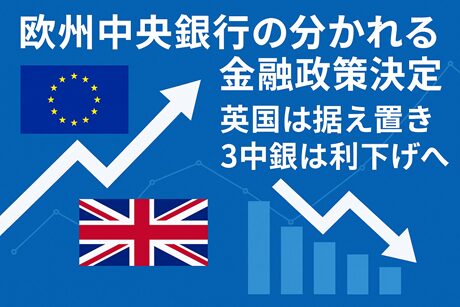

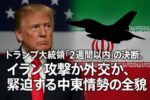
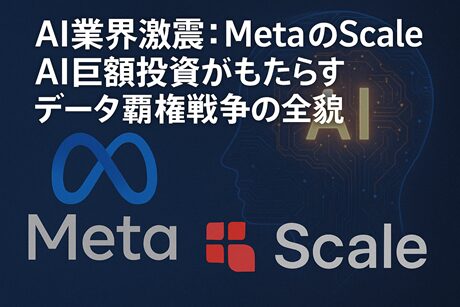



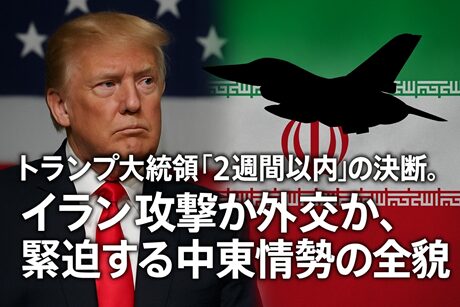
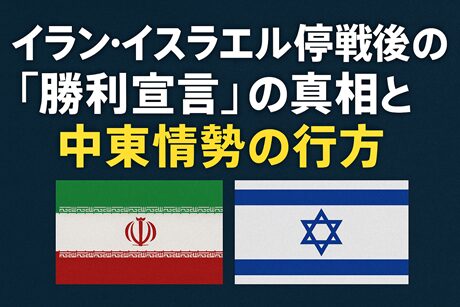



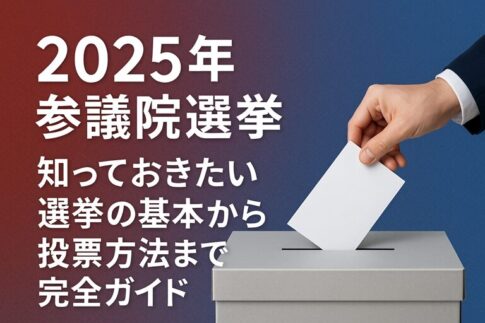
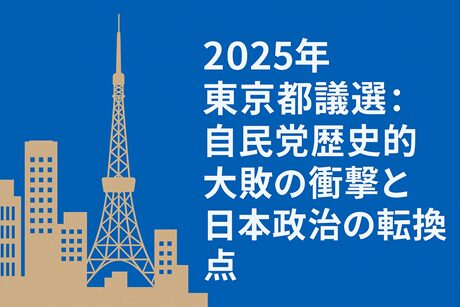

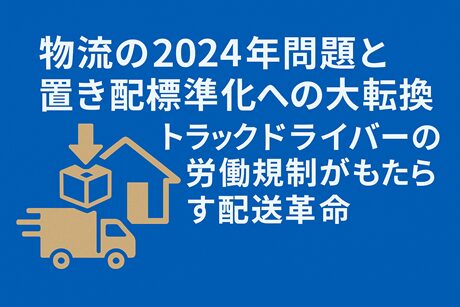

Leave a Reply